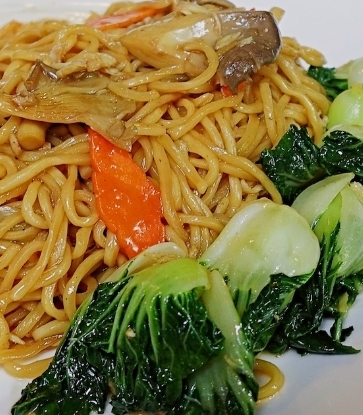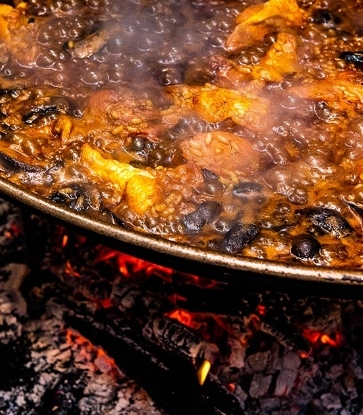Surrounded by the sea on all sides like its neighbours Hangzhou, Teochew, Fuzhou and Guangdong across the strait, fish balls are also a beloved dish in Taiwan. In the pre-refrigeration era, beating fresh fish into a paste and shaping them into spheres helped extend its shelf life.
No matter how similar they look, fish balls come in a wide variety of tastes and textures across different regions. Taiwanese often prepare the fish balls with marlin, milkfish and lizardfish. Fish balls made of these varieties of fish are known for their springiness. On the other hand, cooks in Hangzhou prefer grass carp. It’s not a fancy breed by any stretch of imagination, but Hangzhou fish balls are white and delicate, and as tender and light as tofu because of its laborious cooking process.

Precise technique
Tien Hsiang Lo has been billed as one of the finest Hangzhou establishments in Taipei and is known for its refined food, ambience and service. It’s also among the few places in town that offer authentic Hangzhou fish ball soup. Chef Yang Kuang Tsung (pictured, top) explains that the most important elements in making Hangzhou cuisine is time, temperature, as well as the will and attitude.
Take Hangzhou fish balls for example. Notoriously laborious to prepare and thus among the least profitable items at the restaurant, the fishballs had been taken off the menu for two to three years and did not reappear until Yang assumed leadership in the kitchen.
The most difficult part of the dish is to mix the egg whites into the fish paste using bare hands. It is a 40 minute to an hour process that requires experience and skill. The paste has to be kneaded at the same direction, with constant speed and strength. Once it is shaped into spheres, the fish balls should float on the top third of a bowl of water. Any piece that does not will collapse and lose its shape after cooking.
Handmade with love
Machinery simply cannot replace the human touch in making fish balls, says Yang. While an electric mixer can get the job done, the heat from the motor would affect the temperature of the fish paste and detrimental to the fish ball’s soft texture.
Although the uncooked Hangzhou fish balls can be kept in the fridge for five days, it is always made fresh and served on the same day at Tien Hsiang Lo. The batch made in one afternoon is good for only the same night and lunch service the following day. After that, the cooks make a fresh batch. Yang often cheers his younger colleagues on with some humour: “Work hard and train up your arms, so you can hold your girlfriend tight!”
At the restaurant, the Hangzhou fish balls are served in a rich duck broth. A whole duck is used, with wings and claws removed. The chef scores the back of the duck and par-boils it for two minutes. The poultry is then transferred to a clay pot to cook with spring onion, ginger and Chinese cured ham for three hours.
Try your hands at making Hangzhou fish balls with Yang's recipe below.

Ingredients
Grass carp (1, roughly 2.5kg-3kg)
Spring onion (60g)
Old ginger (35g)
Water (300ml)
Salt (15g)
Egg white (1)
Bai jiu (20ml)
Method
1) Cut off the fish head. Halve the fish horizontally and remove the largest bones and parts of the meat that have turned dark. Using a spoon, scrape the meat out from the side of the tail towards the head to avoid getting the bones into the meat.
2) Flatten the spring onion and ginger and put them into the cold water, breaking them up into small pieces. Add the fish meat and mash up the mixture with an electric mixer.
3) Pour out the fish paste and pass it through a strainer with very fine meshes. Sliding your hand in circular motion in the same direction, pressing down. Remove the bones and membrane.
4) Add salt to the fish paste. Stir it with hands in the same direction for 30 minutes. As the paste thickens, add egg white and continue stirring for another 10 minutes to make the ingredients gel together.
5) Add bai jiu to eliminate the fishy smell. Keep on stirring for 10 more minutes in the same direction to mix air into the paste.
6) Set a pot of cold water on your front. Take out a decent amount of the fish paste and put it on the upper part of your palm. Turn it lightly and let it slide into the water. The fish ball should stay on the top third of the water.
7) Cook the fish balls inside the water on low heat. Remember to not bring it to a hard boil. Maintain the heat at around 95°C – you should see small bubbles rising. If the water gets too hot, add cold water to lower the heat. During the process, turn the fish balls with chopsticks to ensure they’re evenly cooked. Cook for three minutes, then turn off the heat. Keep the balls in the hot bath. Add some salt to season and it’s ready to serve.
This article was written by Chen Ching Yi and translated by Vincent Leung. Click here to read the original version of this story.



















